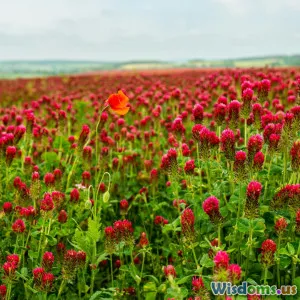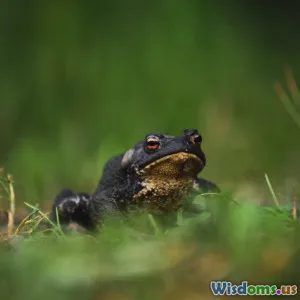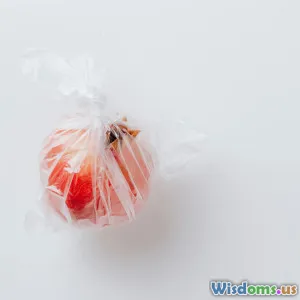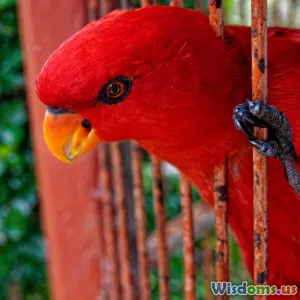
The Importance of Pollinators in Agriculture
7 min read Explore how pollinators sustain agriculture, ecosystems, and global food security through vital roles. (0 Reviews)
The Importance of Pollinators in Agriculture
Pollinators, the unsung heroes of the natural world, play a pivotal role far beyond their often understated presence. Far from just making flowers pretty, these creatures—ranging from bees and butterflies to bats and birds—serve as indispensable agents in global agriculture and natural ecosystems. Without them, a significant portion of the food we eat would be at risk, and the delicate biodiversity of our environment could suffer severe consequences.
What Are Pollinators and Their Ecological Role?
Pollination is the biological process where pollen grains are transferred from the male part of a flower (anther) to the female part (stigma) of the same or another flower, enabling fertilization and seed production. While some plants rely on wind or water for pollination, approximately 75% of the world’s flowering plants depend on animal pollinators.
Types of Pollinators
- Insects: Bees, butterflies, moths, beetles, and flies are among the most common pollinators. The European honeybee (Apis mellifera), for example, is the most well-known and widely managed species worldwide.
- Birds: Hummingbirds and sunbirds often pollinate flowers shaped to accommodate their morphology.
- Bats: Certain tropical and desert plants have evolved to be pollinated by nocturnal bats.
Each class of pollinator contributes uniquely to pollination, affected by behavior, anatomy, and ecology.
The Critical Link Between Pollinators and Agriculture
Agriculture is fundamentally intertwined with pollinator activity. The Food and Agriculture Organization of the United Nations (FAO) estimates that about 35% of global crop production depends to some degree on pollination, directly affecting
- Crop yield quality: Pollination affects fruit size, shape, and seed content, improving both quantity and quality.
- Crop diversity: Many fruits, vegetables, nuts, and seeds require pollinators for production, contributing to dietary variety.
Examples of Pollinator-Dependent Crops
- Fruits: Apples, cherries, strawberries, blueberries, and mangoes require pollinators to yield optimally.
- Vegetables: Cucumbers, pumpkins, and eggplants benefit significantly from insect pollination.
- Nuts: Almonds are nearly 100% dependent on honeybee pollination.
For instance, California’s almond industry wholly relies on managed bee colonies during bloom seasons. These crops support both local economies and global nutrition.
Economic Value
Pollinators contribute an estimated $235 to $577 billion annually to the global economy through their role in enhancing crop productivity, according to research published in Science.
Pollinator Decline and What It Means for Agriculture
Despite their importance, many pollinator populations are in alarming decline due to multiple factors:
- Habitat loss: Urbanization and monoculture farming reduce forage and nesting sites.
- Pesticides: Chemicals such as neonicotinoids have been linked to bee mortality and impaired navigation.
- Diseases and parasites: Varroa mites and pathogens decimate honeybee colonies.
- Climate change: Alters bloom times and disrupts pollinator-plant synchrony.
Real-World Impact
In the U.S., honeybee losses averaging 30% annually have raised concerns over sustainable pollination services. The European Food Safety Authority and other bodies have called for restrictions on certain pesticides.
Farmers are increasingly forced to rent bee colonies at higher prices or rely on less efficient wild pollinators, threatening food security and prices.
Strategies to Protect and Enhance Pollinators in Agriculture
Habitat Restoration and Conservation
Planting flower strips, hedgerows, and maintaining wildflower meadows near farms boosts pollinator diversity and abundance. These habitats provide nectar, pollen, and safe nesting grounds.
Integrated Pest Management (IPM)
Reducing chemical pesticide use by combining biological controls and crop rotation helps mitigate adverse effects on pollinators.
Policy and Community Action
Governments are enacting protective legislation, such as the European Union’s restrictions on neonicotinoids and national pollinator protection plans.
Community-driven programs encourage citizen science monitoring and the planting of pollinator-friendly gardens.
Innovations in Pollination
Researchers investigate robotic pollinators and advances in bee health management to supplement natural systems.
Pollinators and Ecosystem Health: A Broader Perspective
Beyond agriculture, pollinators sustain wild plant communities, which support food chains, stabilize soils, and contribute to carbon sequestration. Their health reflects broader environmental wellbeing, making them crucial indicators of ecosystem change.
Conclusion: Why We Must Value and Protect Pollinators
The indispensable services pollinators offer underscore an urgent call for coexistence strategies. From boosting crop yields and securing food supply to maintaining ecosystems, pollinators are natural allies throughout agriculture and beyond.
Safeguarding their future is not just an ecological priority but an economic and social imperative. Each small action—planting native flowers, reducing pesticide use, supporting sustainable farming—connects to a global effort preserving these creatures that keep our farms thriving and our planet vibrant.
In embracing this stewardship, we protect the foundations of agriculture and ensure a fertile, food-secure future for generations to come.
References
- Klein, A. M., et al. (2007). Importance of pollinators in changing landscapes for world crops. Proceedings of the Royal Society B, 274(1608), 303-313.
- Potts, S.G., et al. (2016). Safeguarding pollinators and their values to human well-being. Nature, 540(7632), 220-229.
- FAO (2018). The State of the World’s Pollinators.
- Gallai, N., et al. (2009). Economic valuation of the vulnerability of world agriculture confronted with pollinator decline. Ecological Economics, 68(3), 810-821.
Rate the Post
User Reviews
Popular Posts




















